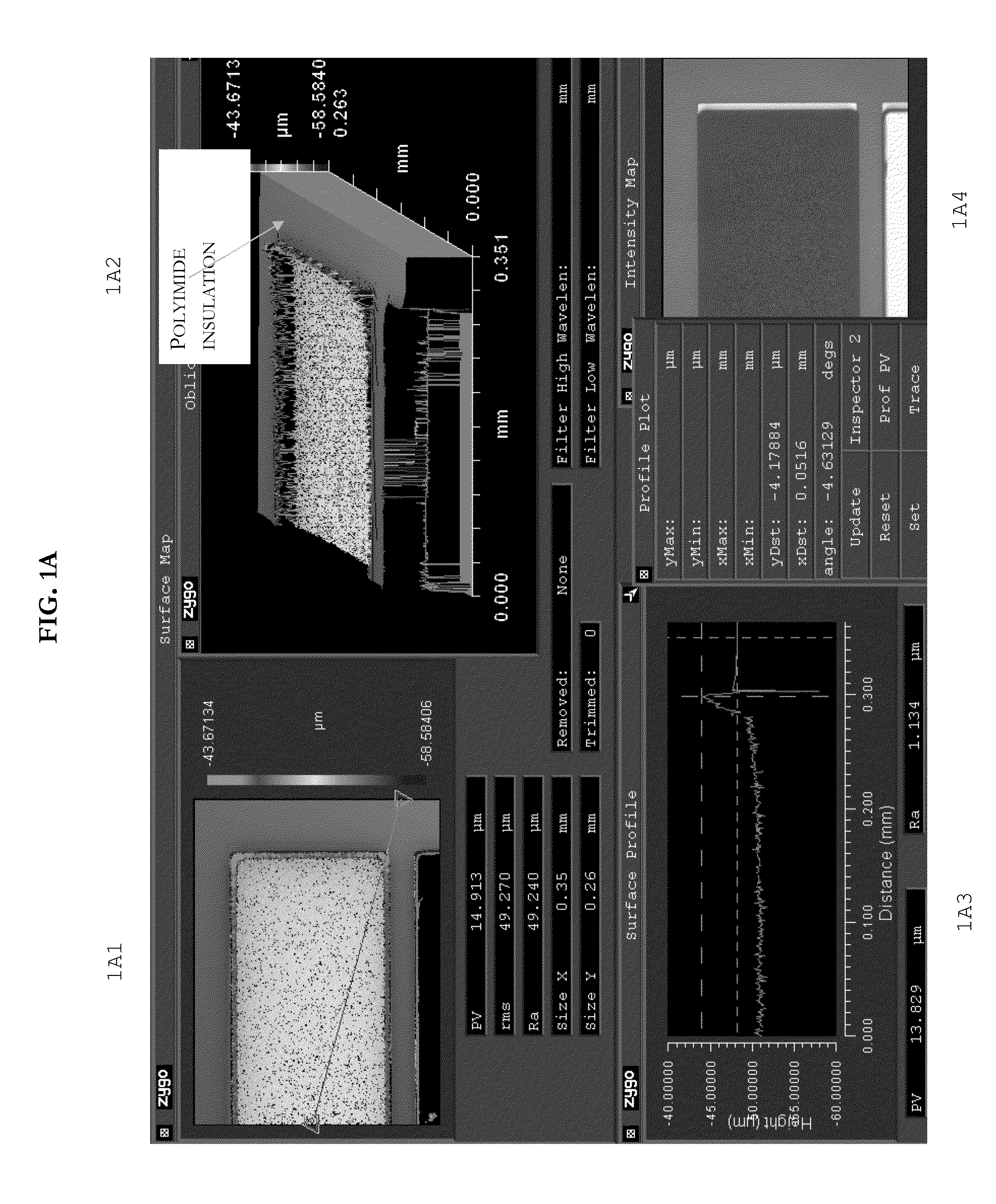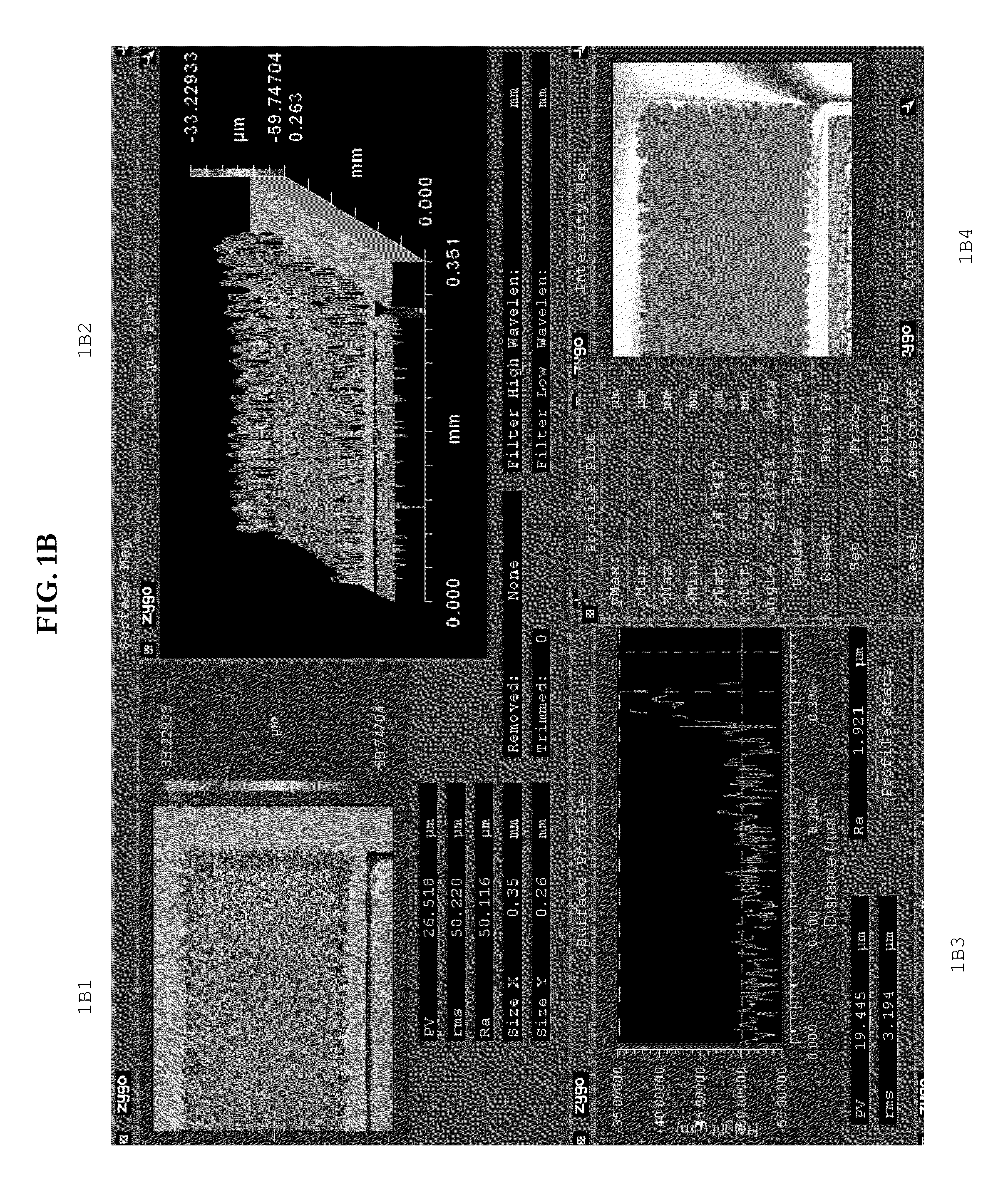Muting glucose sensor oxygen response and reducing electrode edge growth with pulsed current plating
a glucose sensor and oxygen response technology, applied in the field of analyte sensors, can solve problems such as less than ideal characteristics of sensors, and achieve the effects of increasing surface area ratios, and high surface area ratios
- Summary
- Abstract
- Description
- Claims
- Application Information
AI Technical Summary
Benefits of technology
Problems solved by technology
Method used
Image
Examples
example 1
Pulse Plating Conditions that Produce High Surface Area Ratios and Low Edge Growth
[0091]The surface area ratio (SAR) is the ratio between real surface area and geometric area of the electrode. The active (or real) surface area determines the catalytic activity of plated electrodes. The active surface area of the platinum-working electrodes can be measured using the cyclic voltammetry method combined with hydrogen adsorption. In this context, various determinations of Pt surface area are well known in the art, see, e.g. Rodriguez et al., J. Chem. Educ., 2000, 77 (9), p 1195.
[0092]Certain electrodes made with platinum plating techniques that do not utilize current pulses can have a desirable SAR (e.g. one of around 300) but also an edge growth at the distal corners of about 15 to 20 μm. A goal of the pulsed current plating processes disclosed herein is to achieve SAR close to 300 while simultaneously reducing edge growth. “Edge growth”: as discussed in the examples below is the height...
PUM
| Property | Measurement | Unit |
|---|---|---|
| thickness | aaaaa | aaaaa |
| thickness | aaaaa | aaaaa |
| diameter | aaaaa | aaaaa |
Abstract
Description
Claims
Application Information
 Login to View More
Login to View More - R&D
- Intellectual Property
- Life Sciences
- Materials
- Tech Scout
- Unparalleled Data Quality
- Higher Quality Content
- 60% Fewer Hallucinations
Browse by: Latest US Patents, China's latest patents, Technical Efficacy Thesaurus, Application Domain, Technology Topic, Popular Technical Reports.
© 2025 PatSnap. All rights reserved.Legal|Privacy policy|Modern Slavery Act Transparency Statement|Sitemap|About US| Contact US: help@patsnap.com



